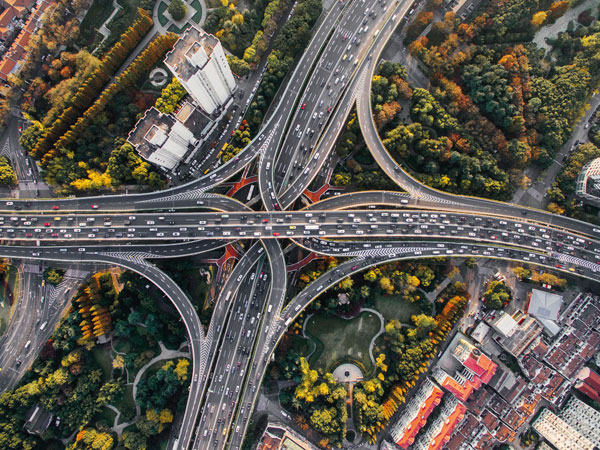In the next few decades, much of VTI’s research will revolve around three major trends in the technological development of the transport system: electrification, automation and digitalisation.
“All three areas are very important, but electrification is the most crucial thing. It’s the key to our ability to cope with climate change,” says Head of research Jonas Jansson when we ask him to gaze into his crystal ball.
Electrification of the world’s vehicles is making major headway, and not only with regard to passenger cars. Just a few years ago, it seemed doubtful that heavy vehicles could be powered by electricity, but now there is rapid development in that area as well.
“The automotive industry is completely clear-eyed on this issue. Many of the large groups have already set an end date for when to stop producing internal combustion engines. They realise that electric cars will improve in every way.

May increase congestion
The development entails great opportunities but can also create problems that are difficult to predict. What happens to the congestion problem in cities if many people have electrified vehicles for which fuel costs ten per cent of what it does today?
“I have an electric car myself and I notice how easy it is to just hop in and be on my way. It’s a cheap car to drive. The cost is barely noticeable on my electricity bill, and the wear and tear and maintenance needs are minor,” says Jonas Jansson.
If, in tandem with electrification, developments in automation mean that many vehicles become driverless and thus become much cheaper to operate, how will that affect the number of vehicles in our cities?
“Technological development will keep barrelling ahead, but in cities we need to walk and cycle more. We must create a behavioural change where we combine transport efficiency with health. But how do we make that happen? This is a very exciting area,” he continues.
“The technology offers great opportunities – but it can also have really negative consequences. It’s important that politics keeps on top of this and expresses what kind of society we want in the future. I think that the Swedish Transport Administration and the Swedish authorities are simply cheering on the technological development, but they should take greater responsibility for building the good society of the future.”
Electric aviation is coming
He believes that we will see the electrification of both shipping and aviation in the future.
“Electric aviation is coming; development is already underway. When we can fly 30–40 km with electric planes, it will change the game plan for regional travel. Then we’ll start looking differently at railway investments, for example. I like railways, but building them is a major environmental burden. So, in the future we may use them mainly for cargo transport. Electric flights will be both cheaper and more convenient for passenger transport.
Electrification seems to be going faster than predicted, but for automation the opposite is true. The passenger car industry thought that we would have large fleets of self-driving vehicles by 2020, but the challenges of such systems were underestimated. However, interest in developing automated transport remains strong. The primary incentive for progress is the ability to eliminate driver salaries, which is a major cost. The first step involves designing vehicles that will be able to drive a specific loop, for example a bus loop in a city or a route between two hubs in an industrial area. Here, VTI is at the forefront of research.
“We’re looking a lot at the remote control of vehicles using 5G. The idea is that a remote operator should be able to monitor several driverless vehicles from a control centre. Even if the vehicles drive themselves, a person will need to intervene from time to time, and that will be the job of the remote operator.
Legal issues are important
It’s difficult to predict where the digitalisation of the transport system will lead us, just as no one knew that we would end up doing our banking with the help of smartphones when they first hit the market. All new vehicles will be connected and have the opportunity to collect data on dangers on the road or maintenance needs. But they can also collect data on aspects that we have yet to consider. This information can lay the foundation for service development.
“There are huge opportunities here. But it’s important to work with legal issues about how we can share data. We have to manage it in a way that doesn’t infringe on personal privacy,” says Jonas Jansson.
He believes that VTI is well-equipped to face the future.
“We have an important role to play when it comes to looking at development from a system perspective; not many players are doing that”.
“But we need to build more competence within all these trends of technological development. Among other things, we need legal expertise and greater understanding of how people fit into the transport system. Technological development is just barrelling ahead, but the regulations aren’t set up for things like driverless vehicles.”
Text: Johan Sievers/redakta
Translated by: Semantix AB

Contact:
Jonas Jansson
jonas.jansson@vti.se
VTI, Swedish National Road and Transport Research Institute, Sweden






Follow us: